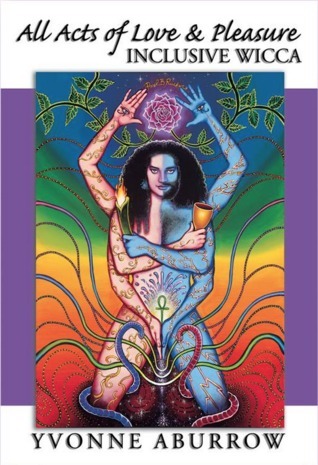Ritual roles are often allocated according to gender, but this doesn’t need to be the case. Allocating roles by gender seems a lazy shorthand for the archetypes you want the ritual role to express. There are so many different archetypes, and not all of them are gender-specific. How about if we allocated ritual roles according to the archetype they are intended to embody, or the skills that are needed for the task at hand?
In inclusive Wicca, we try to avoid allocating ritual roles by gender, but I hadn’t thought very hard about how to allocate ritual roles until I read Thista Minai’s excellent book, Casting a Queer Circle. Instead of focusing on who does what in circle, they have focused on what needs doing in a ritual, and what type of skills would be best to enable those tasks to be performed effectively. So the roles in ritual are allotted to people with the skills that best fit those roles (instead of trying to match tasks to outdated ideas of gender). The role of Greeter reminded me of the coven role of Fetch or Summoner in some forms of witchcraft; the role of Guardian reminded me of the Tyler in Freemasonry.
Some of the skills that are necessary in ritual are:
- setting up the ritual equipment – altar, tools, candles, incense, props
- creating and holding safe space
- putting people at their ease
- leading guided visualisations
- extemporising and improvising
- reciting learnt words
- invocation (giving and receiving)
- evocation
- consecration
- spell work
- moving energy around
None of these seem particularly suited to one gender or another. In inclusive Wicca, a person of any gender may do these tasks. Different people have different sets and combinations of skills, and just because a person has a particular skill doesn’t mean they necessarily have an apparently related skill. For example, I build websites, but I am not skilled at public relations or marketing.
Outside of circle, you need someone to organise the meetings, someone to write and plan rituals, and someone to organise the sharing of ritual texts, training materials, and so on.
![Venetian mask [Public Domain, CC0]](https://dowsingfordivinity.files.wordpress.com/2018/01/mask-1283163_960_720.jpg?w=300)
Venetian mask
[Public Domain, CC0]
Each role in a ritual drama is usually related to an archetype, such as the Trickster, the Wise Person, wildness, the planetary archetypes, the seasons, the four elements, a specific deity, or a specific quality. Sometimes you might pick the person who best embodies this quality; other times you might get people to play a different archetype than the one they often express.
For other roles in ritual (consecrating, casting the circle, leading visualisations etc), I encourage all the participants to develop all the necessary skills. Obviously everyone has an area where they are particularly comfortable and find certain things much easier than others; but it’s also good to develop skills in other areas.
The Myers-Briggs Type Indicator can be a useful tool here, but it’s good to take it with a pinch of salt. I usually come out as an ENFP on the test, but my results are borderline (51% extrovert and 49% introvert, for example). It is based on Jung’s idea that people experience the world using four main psychological functions – sensation, intuition, feeling, and thinking – and that one of these four functions is dominant for a person most of the time. People who are predominantly thinking types have trouble accessing their feelings; people who are predominantly intuitive have trouble analysing things; and so on. You may need to take this into account when allocating ritual roles, if the role calls for a skill that the person struggles with.
The most important thing is that people get to experiment with different roles and don’t get saddled with a particular role for a long time. Keep checking in with people that they are comfortable with the roles allocated, and vary the method of allocating roles.
If you enjoyed this post, you might like my books.



From the perspective of someone who is more a hard polytheist, I don’t see where any of the ritual roles need to be sex orgender specific until you get to drawing down Deity In this case, drawing down someone like Lugh, for example, to me would be rather sex-specific. Maybe it is just something I still haven’t worked through completely :shrug:.
LikeLike
I have fairly often invoked very male deities. I’m genderqueer but assigned female at birth.
A person of any gender can invoke a deity of any gender onto an invokee of any gender.
Not everyone is going to want to have a deity of a different gender invoked on them, and that’s fine – but it should be an option for people who do want it.
I don’t see what it has to do with how polytheist you are – could you elaborate?
I don’t really accept the distinction between hard and soft polytheism (imho, if people think that “all the gods are one god and all the goddesses are one goddess”, that isn’t polytheism, it is polymorphism).
LikeLike